Posts In The “Antarctica” Category
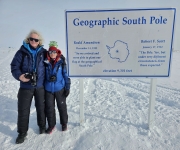
For the first half of the 20th century, the only people who had stood at the South Pole were the 1911/1912 expedition teams of Norwegian Roald Amundsen and Briton Robert F. Scott. It wasn’t until 1956 that humans again set foot at the pole, this time to establish the Amundsen-Scott South Pole Station research center…
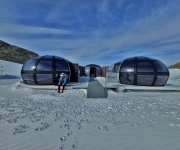
We first visited Antarctica aboard the National Geographic Endurance in late 2022 and loved the raw beauty of the snow-covered wilderness, with fantastically-shaped icebergs and rugged mountains soaring upwards from land and sea. The wildlife was exceptional as well, but it was the scenery that really drew us in. We knew we’d be back, but…
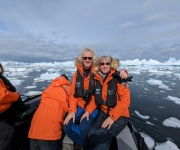
We brought a lot of gear with us on our trip to Antarctica. Most was for keeping warm, dry, and comfortable in the colder weather, but we also brought a variety of other equipment, including cameras, binoculars and a dry bag. In this post, we describe what we brought, what we were glad to have,…

In Choose Your Cruise Operator Carefully, we discussed the risks inherent in an Antarctic cruise, and described the three deaths that had occurred in the course of two weeks near the start of the 2022-2023 cruise season. It turns out there was actually four deaths in that period. The situation has become serious enough that…
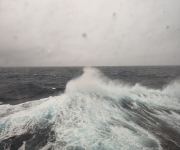
The Drake Passage lived up to its reputation for big weather on our two-night passage back to Ushuaia from the Girlache Strait. We experienced 33-40 ft (10-12m) seas with winds blowing steadily 60 kts and gusting to 70. We didn’t, however, experience the dreaded “Drake Shake”. The National Geographic Endurance handled the conditions remarkably well,…
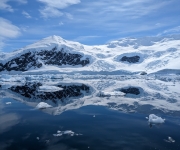
The Girlache Strait extends from the northern end of the Wilhelm Archipelago and separates the Palmer Archipelago from the Antarctic Peninsula. It was discovered in 1898 by Lt. Adrien de Gerlache, leader of the 1897-1899 Belgian Antarctic expedition. The crew included famed Norwegian polar explorer Roald Amundsen, who in 1911 was the first to reach…
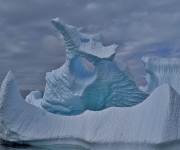
The Wilhelm Archipelago lies north of the Antarctic Circle and is the most southern point on the majority of Antarctic Peninsula cruises. It also is one of the most popular destinations, particularly scenic Lemaire Channel between Booth Island and mainland Antarctica. The protected waterway often is wind-free, yielding near-perfect reflections of snow and ice in…
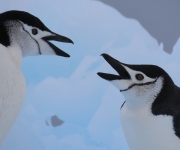
Christmas Day in Antarctica was a big day for wildlife sightings, including an Emperor Penguin, Chinstrap penguins, crabeater and Weddell seals, humpback whales and Orcas. We were lucky to see an Emperor Penguin, rare this time of year. After navigating into ice-filled Barlas Channel, we set out for a tour in the zodiacs and found…
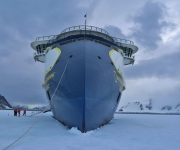
Antarctica is the only continent without a permanent native population. Instead, the year-round population of about 1,000 is made up mainly of visiting scientific researchers and support staff who live in roughly 50 permanent stations throughout the continent. A similar number of seasonal stations allows the summer population to reach 4,000. Forty-two countries operate research…
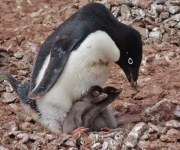
Pourquois Pas Island, at the north edge of Marguerite Bay, was discovered by Jean-Baptiste Charcot. He led the 1908-1910 French Antarctic Expedition, and named the island after his ship. Charcot in turn is the namesake for the French expedition ship Le Commandant Charcot, the highest rated ice class vessel in the world, that we’ll be…

Stonington Island in Marguerite Bay is the site of two early research stations. East Base, the oldest American Antarctic station, was built starting in 1939 but hasn’t been used since 1948. The British Base, Station E, was used for many historic survey missions in the 1940s and saw use until the mid 1970s. From Red…
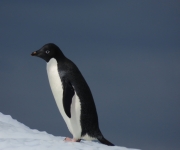
After our second night at sea through the Drake Passage, we woke up in Antarctica. Massive icebergs floated everywhere, some surprisingly close to the ship, in an endless variety of fantastic shapes and sizes. Ashore, steep and snow-covered slopes soared straight up from the water. Antarctica is much more mountainous than we were expecting. Taking…
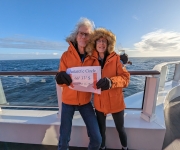
Our two-day crossing of the infamous Drake Passage from Ushuaia to the Antarctic continent was wonderfully calm. We passed the time at the bridge, taking in several educational seminars, and just enjoying being on board the National Geographic Endurance. The ship’s public areas are comfortable and generously laid out, never feeling cramped despite a full…
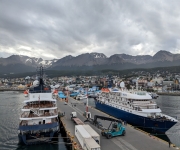
Ushuaia, at the southern tip of Argentina, is the departure point for the majority of Antarctic cruises. Our flight there from Buenos Aires was delayed by the overnight return of the victorious Argentinian World Cup team. Over a million fans had traveled to the airport to greet the players, abandoning their cars and walking when…
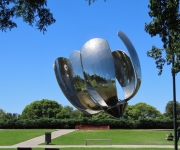
On our second day in Buenos Aires, we took a bus tour through the city as part of our Antarctica cruise package, followed by dinner on our own overlooking Puerto Madero. Buenos Aires is a striking city, full of grand historic buildings, extensive parks, impressive monuments and much public art. We particularly enjoyed our visit…
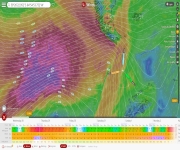
We had a fabulous trip to Antarctica and currently are returning back to Argentina across the Drake Passage. Our southbound crossing was blissfully calm, but it looks like we won’t be so lucky on the return. Our current position in the Drake Passage We had a fabulous trip to Antarctica and currently are returning back…
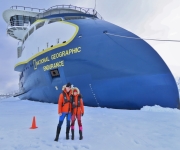
Wishing you all happy holidays and best wishes for the New Year. Christmas Eve 2022 in Antarctica Wishing you all happy holidays and best wishes for the New Year.
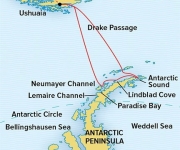
The infamous 500-mile (800 km) Drake Passage between south America and Antarctica is considered one of the most dangerous crossings in the world. Waves and currents that meet no resistance from land masses elsewhere are amplified here, the narrowest passage around the Antarctic continent, producing seas that can regularly reach 40 ft (12m) in height….